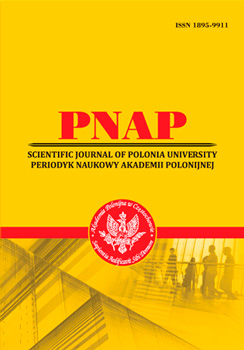SOURCES OF TRAUMATIC EXPERIENCE & CROSS-CONTOUR MENTAL HEALTH RECOVERY TECHNOLOGY
Abstract
The article highlights the sources of psycho-emotional patterns of traumatic experience and outlines a cross-contour technology for overcoming their prolonged impact on human mental health. The mechanisms of semantic coding and decoding of events in the world by a person are defined. Three hierarchical contours of human consciousness are objectified, each of which contains both principles of mental health protection and risks of its violation. Using methods of bodynamic, transpersonal and projective approaches it is proved that the person's reaction to traumatic events is determined by his pre-biographical and early biographical experience. The presented cross-contour technology allows to increase resilience to crisis events of war, to reduce uncertainty and to activate personal dimensions of freedom and responsibility. The corrective component of the technology focuses on the reorganization of the person's semantic system in response to the crisis events of the world. The purpose of the technology is to reduce uncertainty and hesitation and activate the dimensions of freedom and responsibility. The subjective specificity of the world creation by a human is revealed, that is, reflection, generation and understanding of reality
References
2. Balackij, Ye. (2008). Kross-konturnye svyazi v chelovecheskoj psihike [Cross-contour connections in the human psyche]. Vestnik NAN Ukrainy – Bulletin of NAS of Ukraine, 1. 2. 51–59 [in Ukrainian].
3. Capra, F. (1996). The Web of Life. A New Scientific Understanding of Living Systems. New York: Anchor Books.
4. Fiedler, F. (1968). Personality and situational determinants of leadership effectiveness. Group dinamics. Research and theory. New York: Harper & Brothers.
5. Grof, S. (1988). The Adventure of Self-Discovery. State University of New York Press.
6. Izmailov, Ch.A., Labkaev, J.Y., Matveeva, L.V., Izmailova, Ch.N. (2006). Correlation of printed music sounds with basic emotions. Psychological journal, 4. 54–67.
7. Kalishсhuk, S.M. (2020). Geneza smуslovoyi arkhitektoniki svidomosti majbutnikh psikhologiv-konsultantiv [The genesis of the semantic architecture of the evidence of future
psychologists-consultants]: Monografiya. Lviv: Spolom. [in Ukrainian]
8. Längle, A. (2011). The existential fundamental motivations structuring the motivational process. Nova Science Publishers. Vien. 41–56.
9. Leary T. (1987). Info-Psychology. New Falcon Press, Los Angeles.
10. Maksymenko, S. (2006). Genezis sushestvovaniya lichnosti [The genesis of the existence of personality]. Kуiv: KMM. [in Ukrainian]
11. Malejchuk, G. (2016). Simptom kak fenomen psikhoterapii [Symptom as a phenomenon of psychotherapy]. Vestnik psikhologii – Psychology Bulletin. Rezhim dostupu:
https://psychologyjournal.ru/.../za-kazhdym-simptomom-stoit-ten-znachimogo-chelov. [in Belarus]
12. Marcher, L., Fich, S. (2010). Body Encyclopedia: A Guide to the Psychological Functions of the Muscular System. North Atlantic Books.
13. Varela, F. (1995). Resonant Cell Fssemblies. Biological Research. 43. 81–95.
14. Wilson, R.A. (2004). Quantum Psychology: How Brain Software Programs You & Your World. New Falkon Publication, Arizona USA. Eighth Printing.
15. Yatsenko, T.S. (2017). Fenomen impliczitnogo poryadka v glibinnom pi`znanni psikhiki [The phenomenon of an implicit order in the deep understanding of the psyche]. Psikhologiya i
suspilstvo – Psychology and society, 4. 109–126. [in Ukrainian]
Abstract views: 238 PDF Downloads: 158







